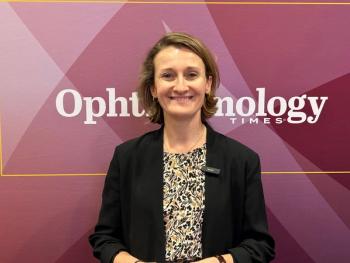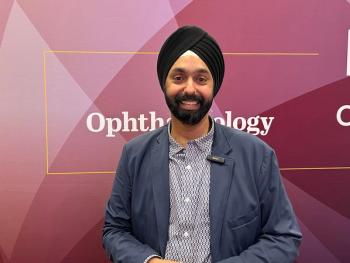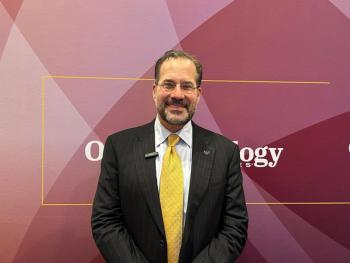
- Ophthalmology Times Europe November/December 2025
- Volume 21
- Issue 6
- Pages: 10 - 11
The accessibility barriers still hindering ophthalmology
Expanding accessibility in ophthalmic training does not require expensive, intricate programming, but reasonable, simple actions from senior clinicians
Ophthalmology has a reputation for being highly competitive, prestigious and rewarding. It draws many interested medical students and aspiring residents each year in the UK. But for most, it also feels strangely out of reach. Unlike many other specialties, ophthalmology offers very little structured exposure during early training, and almost no clear pathway for those trying to break in.
The result is that even the most motivated candidates often struggle to get started, not because of a lack of commitment, but because of a lack of access. As one colleague put it, “In ophthalmology, you often have to be in the specialty to even get a chance to try it.”
The structural barrier
At medical school, ophthalmology placements are usually only 1 or 2 weeks long and often come late in the course. At foundation level, there are very few rotations at all and in some deaneries, such as the East Midlands, there are only about 15 ophthalmology posts out of hundreds.
By contrast, other subspecialties in medicine, surgery and anaesthetics are embedded throughout medical school and the foundation programme. This gives students and junior doctors natural contact points to form relationships, seek advice and build their portfolios. In ophthalmology, those contact points barely exist, and without them, many interested juniors are effectively locked out from even trying.
The reality of admissions
For many aspiring ophthalmologists, trying to gain experience becomes an exhausting exercise in persistence. You send emails that bounce between secretaries, administrators and consultants. No one says no, but no one says yes either—the responsibility gets passed around like
a hot potato.
In such a senior-led specialty, most departments are consultant-heavy with relatively few trainees. This makes it harder to find approachable people who remember what it is like to be at the start of the journey, or have experience relevant to present day realities of competition ratios. All the while, the portfolio clock is ticking. A single shadowing session could provide crucial points and confirm someone’s career choice. As one junior described, though, “Trying to arrange a single clinic can take weeks of emails—and often leads nowhere.”
Misalignment in expectations
One of the biggest barriers is a mismatch between what aspiring residents need and what consultants think is needed. The current specialty training 1 (ST1) ophthalmology application process is one of the most competitive in the UK, probably second only to neurosurgery. Applicants must first achieve a high multispecialty recruitment assessment score to be considered. Next, their portfolio is scored. Only those above the portfolio cut-off are shortlisted for interview. Many consultants are not aware of how demanding it has become. When they applied, the requirements were far lighter. So when junior residents ask for opportunities, they are often met with surprise or indifference, not because consultants are unsupportive, but because they do not realise how high the bar has risen. As one trainee said, “It’s hard to get support from people who don’t know how much support is now needed.”
Selectivity should not mean inaccessibility
There are only about 96 ST1 training posts each year, and the competition ratio is around 14:1 and projected to rise. It is understandable that ophthalmology will remain highly selective. Expanding training numbers is a longer-term workforce issue. But selectivity is different from inaccessibility. “You can’t make the bar this high while hiding the ladder," said one trainee.
Even if the number of posts cannot change, the route to reach them should be visible and attainable for anyone motivated enough. Currently, many talented aspiring residents never get close — not because they are unsuitable, but because they never get the chance to show they could be.
As another colleague said, “Before we choose who gets the places, we need to let people reach the starting line.” This does not require a national mentorship network or expensive programmes. It only requires acknowledgement that access matters. There are several ways institutions could accomplish this level of accessibility:
- Departments could offer a few shadowing slots per month
to foundation doctors or aspiring residents - Deaneries could circulate the name of a single contact in each eye department for career queries.
- The Royal College and deaneries could brief consultants about the current portfolio expectations, so they understand why aspiring residents are seeking these opportunities so early.
Small structural fixes like these could make an enormous difference.
Conclusion
Ophthalmology can stay competitive, but it should not be invisible. Until the specialty becomes more accessible at its foundations, we will continue to lose talented candidates long before they reach the application stage. The number of posts may be fixed, but access to try should not be.
As one junior reflected, “Potential shouldn’t be filtered out by access.” If we want the best people to enter ophthalmology, we need to let them see the door.
Medha Sunil, MD | E: [email protected]
Sunil is a resident doctor based in the UK with a strong interest in ophthalmology, medical education, and improving accessibility to specialty training. She is currently working in emergency medicine while pursuing further opportunities in ophthalmology.
Articles in this issue
Newsletter
Get the essential updates shaping the future of pharma manufacturing and compliance—subscribe today to Pharmaceutical Technology and never miss a breakthrough.
















































